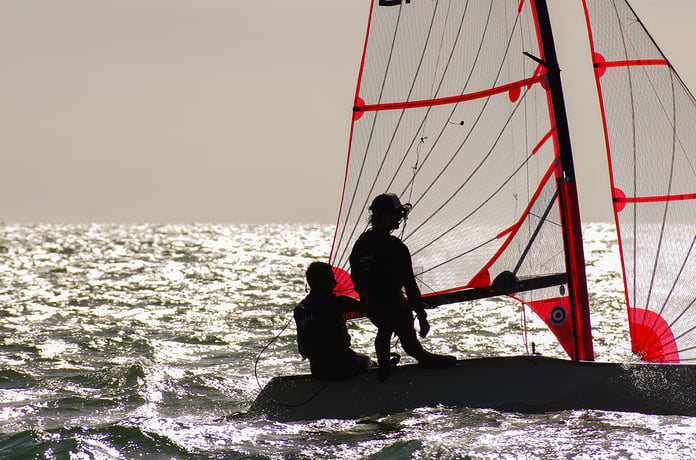How to steer better when Sailing

Image credit: Bigstock.com
Steering a sailboat during a race is a complicated and an extremely important process, since the boat is only allowed to be propelled by the wind.
Steering Device
Larger boats such as the catamaran or trimaran normally possess a steering wheel, while dinghies and keelboats usually feature a stick – also known as the tiller – for sailors to steer with.
Steering with a wheel is relatively simple as the sailor simply has to turn the wheel in the direction that he or she wants the boat to go, whereas using a tiller can be confusing as sailors have to pull the stick in the opposite direction. For instance, if the sailor wants the boat to go starboard, he or she has to pull the tiller to port. Sailors should also avoid oversteering, which occurs when the wheel or tiller is turned too forcefully, as that can drive the boat off course. Instead, sailors should gently adjust the steering device with moderate force. Gripping the wheel or tiller too forcefully usually results in jerky turns that can be both uncomfortable and dangerous.
Sitting Position
The position that sailors sit in while steering also has a direct impact on the boat’s movements in the case of dinghies and keelboats, especially if the boat is steered using a tiller. This is due to the fact that these boats are extremely light, and run the risk of capsizing if the weight on deck is not evenly distributed.
The sailor should sit on the windward side, directly opposite the sails, as the wind in the sails might cause the boat to tip over. The sailor should also take care to sit in a position that leaves a clear path for the tiller, so that it does not hit his or her body when steering.
If the boat is steered using a wheel, the sailor should be sitting to the side of the wheel or directly behind it, so that visibility will not be hindered by the wheel.
Directions
Sailing with a wheel is simple. However, using a tiller requires practise as beginners may find difficulty familiarising themselves with it. One important thing to remember is that for both wheel and tiller steering, the boats must be moved to a neutral position once it has achieved the direction that it is supposed to be heading towards, or else it will continue turning.
Sails
The sails should not be loose and flapping when sailing. If they are loose, the sailor should immediately adjust the sails so it stops flapping. Once done, the boat will speed up considerably.
To receive the latest updates on the happenings in the Singapore sports scene, or to find out more about some of the latest programmes on offer at ActiveSG, like our Facebook page here.





![ActiveSG Academies and Clubs Logo (Solid Colour)[8647]](https://www.activesgcircle.gov.sg/hs-fs/hubfs/ActiveSG%20Circle%202023Theme/images/ActiveSG%20Academies%20and%20Clubs%20Logo%20(Solid%20Colour)%5B8647%5D.png?width=150&height=65&name=ActiveSG%20Academies%20and%20Clubs%20Logo%20(Solid%20Colour)%5B8647%5D.png)



-01.png?width=200&height=141&name=Team%20Singapore%20Logo%20(Red)-01.png)



